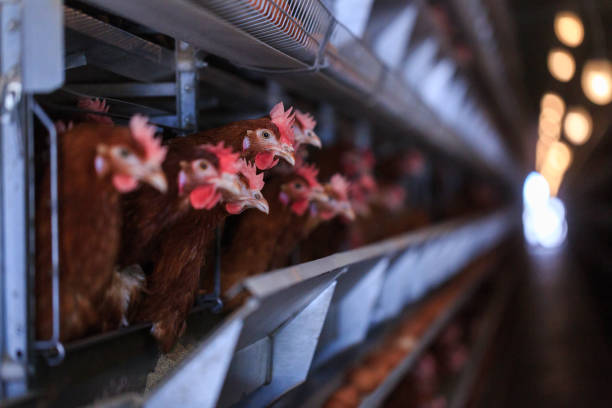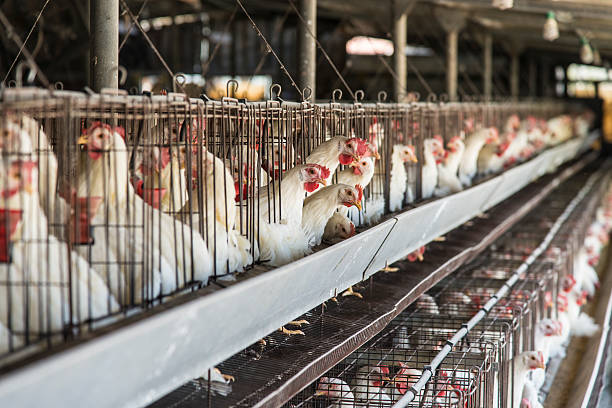In the poultry farming sector, setting up a 10,000 laying hen farming project in India is a major undertaking that requires careful planning. This article aims to delve into the various factors that influence the total cost of such a project.
Understanding the Scope of a 10,000 Layer Farming Project
Before delving into the details of costs, it is important to understand the scale and complexity of a 10,000 laying hen farming project. This project requires the raising of 10,000 laying hens, primarily for egg production. The number of laying hens, plus the necessary infrastructure and operational requirements, are all within the cost of a 10,000 laying hen farming project.
Land and Infrastructure Requirements
The cost of land in India can vary significantly depending on the location and suitability for poultry farming. A sizable plot of land is indispensable for accommodating the infrastructure necessary for a 10,000 layer farming project. Factors such as proximity to urban centers, quality of soil, and accessibility to utilities can influence land prices. The construction of poultry sheds, feeders, waterers, and other infrastructure elements constitute a substantial portion of the initial investment.
Equipment and Supplies
Equipping a poultry farm for 10,000 layers necessitates a range of specialized equipment and supplies. High-quality feed, water supply systems, lighting, ventilation units, and waste management solutions are critical components that contribute both to the welfare of the birds and the efficiency of the operation. The cost of acquiring and maintaining these essential items should be factored into the budgetary considerations.
Labor and Management Costs
The successful operation of a 10,000 layer farming project hinges on competent labor and efficient management practices. The cost of hiring skilled workers, veterinarians, and administrative staff should be accounted for. Additionally, ongoing training programs and incentives to retain qualified personnel are integral to the sustained productivity and welfare of the layers.
Other Cost Considerations
Beyond the core expenses of land, infrastructure, equipment, and labor, several ancillary costs must be taken into consideration. Insurance coverage for the farm, taxes levied by local authorities, and utility expenses, including electricity and water, constitute additional financial obligations. Contingency funds for unforeseen circumstances and periodic maintenance costs should also be factored into the overall budget.

Estimating the Financial Outlay
It is difficult to accurately estimate the cost of a 10,000 laying hen farming project in India due to market conditions and regional variations, but a rough estimate can be provided based on current trends and industry standards. Generally speaking, the total investment required for such a project could range from a few crores to tens of crores of rupees.
Breakdown of Costs
- Land and Infrastructure
- Land Purchase: Depending on the location and size of the farm, the cost of acquiring suitable land can range from INR X to INR Y per acre.
- Construction of Sheds: Building appropriate housing facilities for 10,000 layers can cost between INR A to INR B per square foot.
- Equipment and Machinery: The procurement of essential equipment, including feeders, waterers, and lighting systems, may incur costs in the range of INR C to INR D.
- Operational Costs
- Labor Expenses: Allocating funds for skilled labor and managerial staff can amount to approximately INR E to INR F per month.
- Feed and Supplies: The monthly expenditure on high-quality feed and essential supplies may range from INR G to INR H.
- Miscellaneous Expenses
- Insurance and Taxes: Budgeting for insurance coverage and tax obligations can require an annual outlay of INR I to INR J.
- Utilities: Monthly expenses for utilities such as electricity, water, and waste management might average around INR K to INR L.
Conclusion
Starting a 10,000 laying hen farming project in India requires careful planning. While the exact cost may vary depending on a number of factors including location, scale, and operational efficiency, a comprehensive understanding of cost considerations is essential for prospective poultry farmers. By conducting thorough research, seeking professional guidance, and adhering to best practices in poultry farming, entrepreneurs can better understand this investment and lay the foundation for a sustainable poultry farming business.







